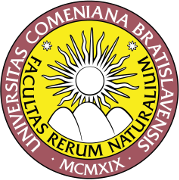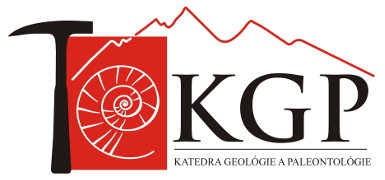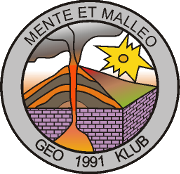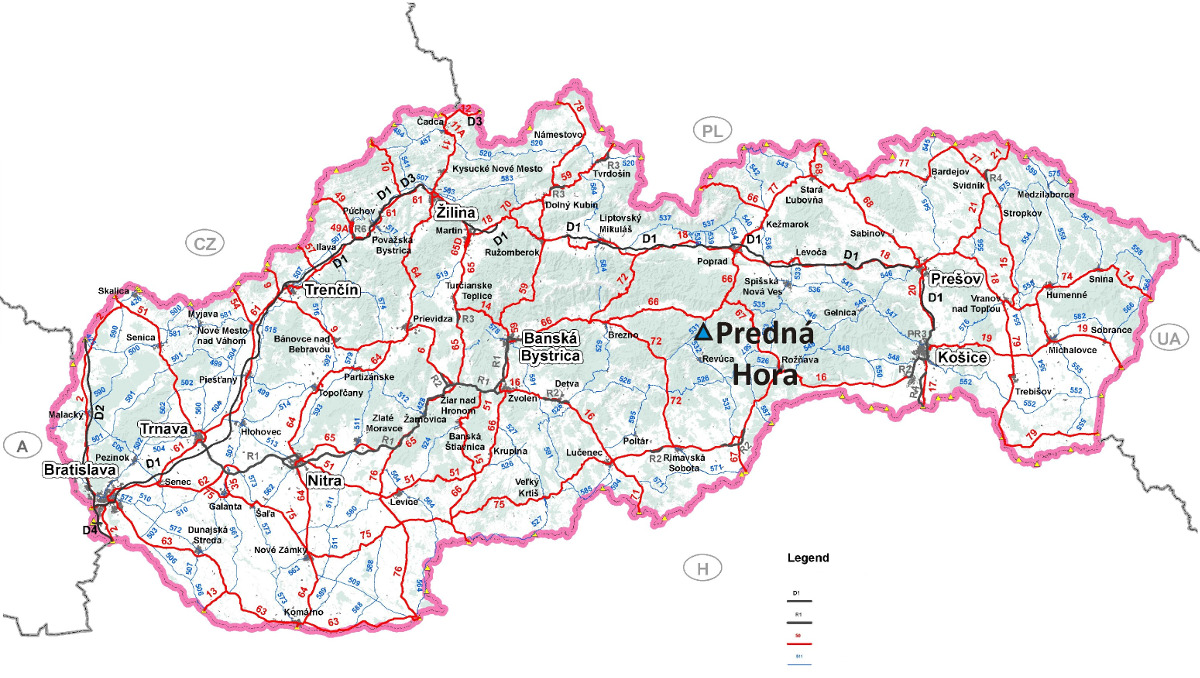14th Meeting of the Central European Tectonic Studies Groups
Predná Hora April 28 – May 1, 2016 SlovakiaThird circular
The meeting is organized by
Faculty of Natural Sciences, Comenius University in Bratislava
Geological club Bratislava
 |
 |
 |
Organizing team
Rastislav Vojtko, Margaréta Gregáňová, Silvia Králiková & Silvia Vojtková
Dear Colleagues,
because the CETEG 2016 meeting is coming soon, we would like to specify the location of the meeting and conference schedule details. Predná Hora is located in the central part of Slovenské Rudohorie Mts., close to Muránska Huta village, 40 km south of Poprad (coordinates of Predná Hora resort: 48°45'52.1"N and 20°06'22.3"E). All activities related to the conference as well as dining will take place in this resort. The resort consists of several buildings such as Pension, Koliba, Observatory, Okály and Cottages, where the accommodation is reserved.The Central European Tectonic Group is an open scientific association bringing together the geoscientists with the interest in geodynamic processes of the Earth crust in a broad measure.
Spring in this locality is mostly characterized by wet weather and wind with the average temperature of approx. 5–10°C.
How to travel to Predná Hora
From Bratislava to Predná Hora: motorway D1 (E75) to Trnava crossroad (distance: about 40 km) up to exit ramp named Trnava and further continue via the R1 (E58): Trnava – Nitra – Zlaté Moravce – Žiar nad Hronom – Zvolen – Banská Bystrica (distance about 180 km). Then use 1st class road No. 66: Banská Bystrica – Brezno (distance about 45 km) and 1st class road No. 72: Brezno – Pohronská Polhora – Tisovec (distance about 30 km) and then 2nd class road No. 531: Tisovec – Muráň – Predná Hora (distance about 20 km). Predná Hora is a saddle aprox. 1.5 km before Muránska Huta village. On this saddle, please turn to the right and then follow road sign “Predná Hora rekreačný areál” (aprox. 1.5 km) by forest road.
From Poprad to Predná Hora: 1st class road No. 67: Poprad – Hranovnica – Vernár – Telgárt – Červená Skala – Muránska Huta – Predná Hora (distance about 40 km). Predná Hora is a saddle aprox. 1.5 km before Muránska Huta village. On this saddle, please turn to the left and then follow road sign “Predná Hora rekreačný areál” (aprox. 1.5 km) by forest road.
From Lučenec to Predná Hora: 1st class road No. 50 (E58): Lučenec – Ožďany – Rimavská Sobota (distance about 30 km) and further continue via the 1st class road No. 72: Rimavská Sobota – Hnúšťa – Tisovec (distance about 35 km). Then use 2nd class road No. 531: Tisovec – Muráň – Predná Hora (distance about 20 km). Predná Hora is a saddle aprox. 1.5 km before Muránska Huta village. On this saddle, please turn to the right and then follow road sign “Predná Hora rekreačný areál” (aprox. 1.5 km) by forest road.



PLEASE CONTACT US FOR DETAILED TRAVEL INFORMATION IN CASE, YOU WILL NEED OUR HELP
vojtko@fns.uniba.sk or by cellphone: +421 905 719 767
Main topics of the 2016 Meeting
A special attention of the CETEG 2016 meeting will be dedicated to the Alpine geodynamic evolution of central zones of the Western Carpathians, however broad-scale studies of the Variscan and Alpine-Carpathian-Dinaridic orogens and topics related to theoretical aspects of structural geology, petrology and geochronology, as well as neotectonics and basin evolution are promoted as important subjects of the meeting. Several invited speakers provide hints to the main themes of the meeting, although any other contributions related to the common CETEG subjects are welcome.
-
Dr. Emő Márton (Geological and Geophysical Institute, Paleomagnetic Laboratory, Budapest, Hungary) – “Adriatic vs. African APW as the paleomagnetic reference system for ALCAPA and the deformed margins of Adria”
The Adriatic microplate is the largest crustal block in the Central Mediterraneum which played an important role in the tectonic development of the area. As a result of 15 years of systematic paleomagnetic research an Adriatic APW for the Middle Jurassic-Eocene time interval, based on robust paleomagnetic data from its stable core, is now available. African APWs published by different authors considerably differ for pre-Aptian times, while exhibit similar trends for younger ages. The new Adriatic APW systematically differs from any of them. The Adriatic APW will be discussed in terms of rotations and latitudinal displacement of the crustal block, will be compared with African trends in order to pinpoint the most important large scale displacements possibly in co-ordination or independently of the African plate. It is obvious that the Adriatic APW is the proper reference system for its deformed margins. As the Adriatic APW is based on very precisely dated and robust paleomagnetic results, the tectonic reconstructions in the ALCAPA region would also benefit from relying on this APW.
-
Prof. Hans-Jürgen Gawlick (Montanuniversität Leoben, Austria) – “Triassic-Jurassic tectonostratigraphy of the Circum-Pannonian orogens”
The Triassic to Jurassic evolution of the Circum-Pannonian realm is crucial for the controversially discussed palaeogeographic reconstructions of the northwestern part of the Tethyan realm. The questions: 1) Are ALCAPA, the Southern Alps/Dinarides and the units in the Pannonian (e.g. Transdanubian Range, Tisia) independent microplates or scattered by younger tectonic motions?, and 2) how many Triassic-Jurassic oceans (e.g. Meliata-Hallstatt Ocean, Maliac Ocean) existed? are still a hot topic. Detailed Triassic-Jurassic tectonostratigraphy and basin evolution can help to contribute essentially to these questions.
-
Prof. Nikolaus Froitzheim (Universität Bonn, Germany) – "Cretaceous orogeny in the Eastern Alps – Collision or intracontinental subduction?"
The Pohorje Mountains in Slovenia have been established as an ultrahigh-pressure metamorphic terrane by thermobarometry of eclogites, garnet peridotites, garnet-kyanite gneisses, and the finding of microdiamond. This terrane was subducted from ca. 95 Ma to 90 Ma as part of the Austroalpine high-pressure belt. Various interpretations exist regarding subduction – either intracontinental or collisional after closure of the Meliata Ocean – and exhumation. These are discussed with respect to structure, stratigraphy, and geochronology of the Austroalpine nappes.
Schedule of the CETEG 2016 conference
Registration and accommodation will be at 14:00–20:00 of Wednesday, April 27, 2016 and at 14:00–20:00 of Thursday, April 28, 2016 at reception desk of the Predná Hora Pension. The pre-conference excursion will start at 9 o'clock.
Here you can download CETEG 2016 - Conference program and CETEG 2016 - Conference posters
Note: Approximate size of posters (portrait) is A0 or smaller (A1).
Contact details
Whatever you need to know, please do not hesitate to contact the organizers:
Rastislav Vojtko: vojtko@fns.uniba.sk Silvia Králiková: kralikova@fns.uniba.sk